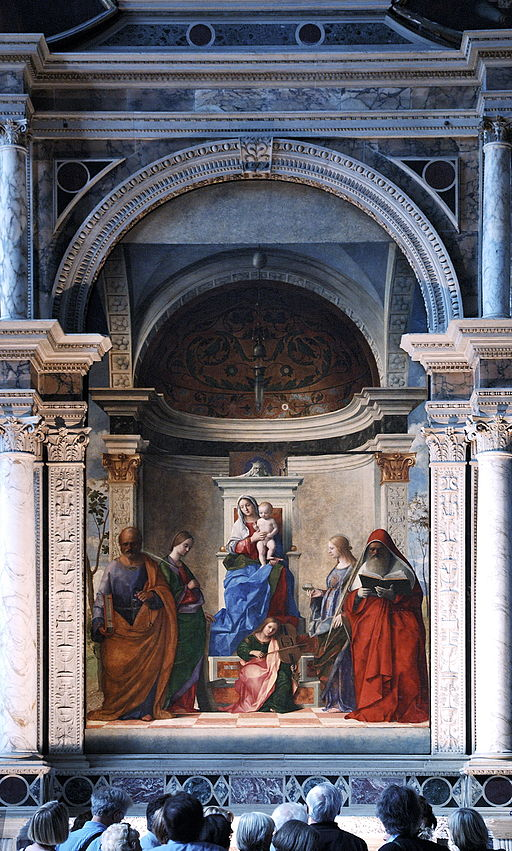La Serenissima

Unlike at home in Scotland, where soft light clings on well into the summer nights, the sun here works tirelessly until suddenly, as if exhausted itself, it stops. Evenings here are short and if you’re not looking you will miss them, moving quickly from peach to bruised mauve. Night-time and a blanket of thick darkness provide seemingly underappreciated opportunity for stalking the city’s warren of closes, piers, bridges and waterways. Though historically named La Serenissima, the daytime streets of Venice in July can be dauntingly crowded and at times seem far detached from serenity.
Whilst trawling the city for artwork I have found myself led into some of the countless religious buildings which shelter many of the paintings and sculptures we have been presented with in art history lectures. These places command hushed silence and contemplation.
Our own exhibition takes place inside the deconsecrated Chiesa di Santa Caterina in which a statue of St. Catherine conveys a fiercely powerful, goddess-like figure; not unlike ancient Greek depictions of Nike, personification of Victory. She holds at her side a splintered fragment of the wheel upon which she was put to be tortured, but over which she triumphed when it broke at her touch – a symbol of her personal resilience and perhaps too the vengeful streak which we see translated into Maclean’s own ‘fairy’ character. Santa Caterina, our Catherine of Alexandria, a figure whom admittedly might have gone previously unnoticed by myself, is one that I now search for.
In the Chiesa di San Zaccaria she makes another appearance. Giovanni Bellini’s altarpiece of 1505 shows St. Catherine placed significantly, standing to the right-hand-side of the Virgin who is enthroned with Child. Bellini’s St. Catherine however is different from the one which we have come to know. She too holds the splintered wheel at her side but with her childlike face tilted downwards her demeanour is one of humility and acceptance. Any triumph which she feels is in quiet exaltation at her proximity to the divine.
Bellini’s work called to my mind another Italian altarpiece that I had spent some time with just a week earlier, though not in Italy. This work is over one and a half thousand miles away in my home islands of Orkney. La Bella Cappella Italiana (known simply as the Italian Chapel) was built on the Orcadian island of Lamb Holm during World War II by the Italian POWs stationed there, with the intention of boosting camp morale and providing them with a dignified place of worship and refuge in a disrupted, war-torn world.
Inside two joined Nissan huts, Domenico Chiocchetti led a small team of his fellow prisoners in executing a series of murals with what limited materials they could source, transforming the space illusionistically into a chapel of stone, iron and glass. In the altar, an image of the Madonna and Child is encircled with the text Regina Pacis Ora Pro Nobis – ‘Queen of Peace, pray for us’. Above their heads, on the curved ceiling, the Lion of St. Mark holds his scripture open. His symbol, the winged lion is held dearly by the Venetians especially. The words written here are not his, but those of the Italian prisoners – Pax tibi Marce, evangelista meus – ‘May peace be with you Mark, my evangelist’.
BL

